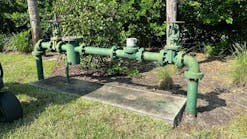Columbia, SC, sits at a point just north and east of the headwaters of the Congaree River. It is here that the Saluda and the Broad Rivers converge to form the Congaree, which spreads broadly across a wide span of relatively shallow rapids as if designed by nature to accept the combining flow from its two major tributaries. Dotted with huge boulders, the cobalt-blue waters flow brightly past innumerable island slivers, rocky midstream outcroppings with profusions of lush green vegetation. The city is separated from the river by the historic Columbia Canal, which was originally built in the 1800s to enable boats and barges to bypass the rapids. Today, the river serves as a primary source of water to become purified drinking water for Columbia’s residents.
On the river side, the canal is lined by an inconspicuously protective dike that city planners, with ingeniously innovative foresight, redesigned and disguised as the scenic pedestrian and bike path known as the Three Rivers Greenway. Farther downstream and below the city, the Metropolitan Wastewater Treatment Plant sits between the Congaree on one flank and a sea of cornfields on the other, and just north of the raised roadbed of Interstate 77.
Viewed from any of a million points extending from the tranquil Greenway and down along the wide banks of the Congaree as it continues on its journey to Lake Marion, South Carolina’s largest lake, this expansive confluence of three significant rivers presents an idyllic, halcyon scene worthy of any picture postcard, yet it’s right in the midst of South Carolina’s state capital and its second most populous city.
But the scene was far from idyllic in early October 2015, when blackening skies whipped by hurricane-force winds brought forth torrential rainfall that threatened to inundate the city. The storm pushed the state’s largest-capacity wastewater treatment plant to its critical breaking point and beyond, were it not for the heroic efforts of 31 determined operators—many of whom stayed on duty for more than 48 continuous hours in a desperate all-or-nothing fight to keep the effluent in compliance.
South Carolina’s catastrophic 1,000-year flood rose rapidly as the remnants from Hurricane Joaquin, together with a massive storm front, dumped anywhere from 15 to 20 inches of rain across the region’s already saturated soil, with some locales reporting more than 25 inches in less than three days. The Columbia airport would record 10.28 inches for October 3–4, breaking the old 2-day record by nearly 3 inches. Roads became swollen waterways in a matter of hours; motor vehicles were bobbing along like children’s float toys; tens of dams failed, allowing the associated ponds and lakes to flow into the lower elevations and worsen an already dangerous situation.
Even though the hurricane would never make landfall on the US mainland, its powerful headwinds pushed ashore such huge amounts of ocean moisture along the East Coast that, in advance of its arrival on October 1, South Carolina Governor Nikki Haley along with the governors of Maryland, New Jersey, and New York all declared states of emergency and mandated the evacuation of thousands of coastal residents. It was clear that the city of Columbia was about to see massive flooding like it had never experienced before.
The deluge began. By the morning of Sunday, October 3, even as the roads leading up to the Metropolitan Wastewater Treatment Plant were quickly going from accessible to impassable, plant superintendent David Wiman convened an emergency meeting of five of his key staff to discuss South Carolina Department of Health and Environmental Control’s suggestion to shut down the facility and evacuate. Abandoning the plant, Wiman felt, was simply not an option. “If we shut down this plant, wastewater is going to back up into the lines and into the city and the neighborhoods,” he reminded his staff. Without onsite operators, the best that could be done would have been to leave the screw pump running, endlessly pushing sewage from one end of the plant to the other, eventually either washing out the facility’s microorganisms or slowly killing them if the aerators were left off. And if machinery failed with nobody onsite, it could result in an even worse scenario, such as an uncontrolled fire or millions of gallons of semi-treated sludge either spilling into the Congaree or backing up into the city streets and roadways. The operators in the room would have none of it, so the idea was quickly discarded.
Backing up injection basin
Wiman then hit on what seemed to be the only option left: evacuate almost everyone but keep in place a crack skeleton crew, including himself, to keep the plant running as long as possible. And while Wiman didn’t want anyone on his team to be in harm’s way, before he could get the words out of his mouth asking for volunteers, four hands in the room shot up immediately.
“There was a lot on the line at the time,” says Wiman. “If we were to have shut down and evacuated the plant, as was suggested by the state’s regulators, we could have all left and theoretically enjoyed some unscheduled time with family with no questions asked. However, all the wastewater entering into the plant would then have backed up into the system and would have started flowing out into the streets where emergency workers and citizens were. We were all in agreement that would not be acceptable. But agreeing to keep people on duty at the plant meant that should the dike fail, we could lose millions of dollars worth of energized equipment. I don’t think anybody except me really thought about that, and it didn’t occur to me until several hours after the initial evacuation. But, as the captain of the ship, so to speak, I was prepared to be one of the skeleton crew left behind.”
Aerial view of the plant days after the storm
Four of a Kind Against the Flood
Brandon Wilcox had a notion, almost a premonition, of what was about to happen. He had already contacted his fiancée, who informed him that their house was already flooding, many of their possessions ruined. She was in the middle of gathering a few things before evacuating to her parents’ house, where she would be safe. He was relieved that she was good, especially since the wedding date was just a week away. Wilcox is a mountain of a man, yet one who speaks with the soft-spoken confidence of someone who believes he can move mountains when required. That morning, with nothing he could do to help the situation at home, Wilcox reasoned that the best thing he could do was to stay where he might be able to make a difference—the sewage treatment plant. Volunteering to be among the skeleton crew was as natural to him as saying “I do” would be one week later. “Being busy fighting this larger crisis,” he admitted, flashing a generous smile, “would take my mind off my personal crisis at home.”
Adrian Martin is one of the Metro plant’s chief operators, though much like Wilcox, with his fireplug stance he too looks like he could have been a tackle in the NFL. Martin got into the operations business because he truly respects the environment and feels that through water management he can make a difference every day he’s on the job. “It’s long hours with no glory,” says Martin, who was also single at the time, adding ironically, “You can’t just turn it off and go home when things get tough.” That attitude, and the profound personal and professional responsibility that Martin feels for the health and safety of Columbia’s 135,000 residents, meant that his volunteering for the skeleton crew was a fait accompli from the get-go. The Metro plant wasn’t going to go down on his watch. It was Martin, who has no children of his own, who convinced Wiman to evacuate the plant. Initially, “Wiman resisted,” says Martin, “but then agreed the plant was in good hands once he realized the team of four included the plant’s two chief operators and its future maintenance manager.”
Ashley Dove knew when he became an operator that it would be an inglorious job—especially when it comes to dealing with raw sewage. “It’s the clean drinking water guys that get all the glory down at City Hall and out there on Main Street,” jokes Dove, waving a meaty hand in the general direction of the capital city. “We’re the guys in hip-waders in the basement nobody wants to think about. After people flush their toilets, well, they want all that stuff to go away so they can just forget about it. That’s why wastewater operators don’t exist in the public eye.” Another doorframe-sized man among the crew that would be the plant’s last line of defense, Dove solemnly affirms that it’s all about keeping the environment—and the clean water supply—safe from contamination. That’s why he became an operator, and that’s why there was simply no question about volunteering in his city’s time of crisis.
Rounding out the team of four, James Foust is another seasoned operator and perhaps the most soft-spoken member of the courageous group. For Foust, too, there was no need to contemplate, even for a nanosecond while scratching his slightly graying beard, before saying, “I’ll stay.” Asked about his decision later, Foust winked and responded with only four words: “I like
a challenge.”
Superintendent David Wiman
Island in the Storm
Oddly enough, as the final evacuation was completed late in the afternoon of October 4, the sun finally burned through the clouds above. To most citizens, this was a sign of improvement. At Metro, it just meant that they could better see the quickly rising waters that would soon completely surround the enormous facility. The dike had given way just 1,600 feet downstream, allowing hundreds of thousands of gallons to pour over what remained of the berm and into the low-lying farmland. Wiman departed as well, reluctantly leaving his four volunteers in place but knowing it was the right thing to do. The plan was for them to hang on as long as they could, and if things got bad enough, Wilcox, Martin, Dove, and Foust would be evacuated at the last possible moment—but that would never happen, as things turned out. In any case, after leaving the plant, Wiman proceeded to set up an offsite command center on higher ground to monitor their efforts, as well as the efforts of the small team that Dove had strategically deployed across the system’s 56 lift stations to try to keep as many of them running at full tilt for as long as possible.
The plant was now an island, surrounded by 7 feet of water or more on all sides. There was no way to get chemicals into the plant or biosolids out. The members of the operations crew were physically on their own. Of course, the truth is that these four guys weren’t going to leave the plant regardless, knowing that they were the only people left who could possibly prevent a catastrophic health crisis that could linger for months and affect hundreds of thousands of their neighbors.
Yet ominously, the rising water resulting from the record-setting rainfall that at times fell at rates of more than 2 inches an hour was not the only situation the men had to be concerned about. Water containment installations across the region were beginning to be compromised by high water. In fact, the Columbia Canal had already been breached, threatening the clean drinking water supply to the city’s roughly 130,000 inhabitants.
The four operators were unfazed. “We were hearing reports of levees and dams being breached all around us,” says Martin, “and we weren’t sure how much that was going to impact us at the plant.” He adds, “We figured if the dike goes and this place gets flooded, we’ll just have to get on top of the admin building or the incineration building. We’ll just camp up there and we should be fine till the sun comes out.”
Massive Amounts of Influent Flows
Columbia’s wastewater system serves approximately 60,000 households and businesses and covers an area of roughly 120 square miles. It consists of two major components, the Metro Wastewater Treatment Plant itself and the vast wastewater collection system of piping and pump houses known as lift stations. As part of running this system, the city maintains a network of more than 1,000 miles of underground sewer piping accessed through more than 30,000 manholes, and driven in large part by 56 lift stations of varying sizes and capacities. Although the average flow through the plant under normal conditions is about 35 million gallons per day (MGD), like most large wastewater treatment facilities, the Columbia plant is over-designed to be able to handle a maximum peak flow of 80 MGD. However, during the heart of the storm, October 3–5, the plant experienced influent flow totals of 87, 120, and 156 MGD. That meant the team had to get creative with shifting the load, in essence, to try to keep the raging combined influx of wastewater and floodwater under control.
As the incoming flow quickly exceeded the plant’s design peak, the team needed to come up with a plan. “I like to tell everyone that we turned to the section of the operation manual labeled ‘1,000-Year Flood’ and it was blank,” says Wiman. “Luckily we have the benefit of having two separate treatment trains, so we made the decision to run the smaller train flat out, but within design parameters. The larger train would then take the brunt of the excess flow that we could not send to the equalization basin. In order to not wash out our microbiology, I employed an amended trick that I learned while working at my first treatment facility and turned off our surface aerators, which allowed the microbiology to settle to the bottom of the tanks. Periodically, we would then shut off our return activated sludge pumps and turn on the aerators for 30 minutes to give them a good shot of dissolved oxygen. This allowed the microbiology to remain relatively healthy. Because stormwater is already high in DO and low in ammonia, this allowed us to get partial treatment, while minimizing the increase in total suspended solids passing through the train. After disinfection, the effluents from the two trains were blended prior to leaving the facility.”
One of the plant’s key overdesign features came into play as well. At the headworks, where the sewage first comes into the plant, the operators were able to divert a portion of wastewater to the equalization basin for temporary storage until it could be added back to the influent stream for treatment later on. The basin holds approximately 154 million gallons, and with tens of millions already present from a preceding storm, the team had to be very aware of what they diverted. They had to stress Train 1 as much as possible.
All seemed like it was going well before the call to evacuate, and then the team was tested. “Our influent is pumped up to a high elevation initially, and then it gravities through the various treatment processes and ultimately out to the river,” explains Wiman. “But the river level had risen so high that we didn’t have enough head pressure to get all of our flow out into the river, and our basins began backing up. We discovered that our Train 1 chlorination addition basin was the low point. So we improvised and used the stormwater drains around the plant as makeshift contact channels.”
As the team was preparing to evacuate all but the skeleton crew, a brief power outage tripped the surface aerators and left them offline for many hours. Of their operational actions, Martin notes, “Not textbook—but it worked.”
Brandon Wilcox, Adrian Martin, Ashley Dove, and James Foust have been nationally recognized for their actions in preventing the sewage overflow.
Working as a Team
With such a small crew working in shifts to manage the massive plant, normal operation was simply not feasible, so as Foust explains, “Instead of working separately, all of us worked together as a team, side by side. We just rotated around and did it together. If somebody needed to take a break, somebody else would fill in. Nobody really slept.”
In fact, the four operators traded off maintenance tasks to help ensure no basin overflows and to maintain ongoing treatment of the sewage as much as possible given their limited resources. None slept for more than an hour or two. Although, flashing his signature broad grin, Wilcox admits to having nodded out at one point involuntarily, literally head-on-desk, from the sheer exhaustion of it all. That’s when clanging alarms woke him with a heart-pounding start. He altogether gave up the idea of a nap and rejoined the others at the front lines of the battle.
While there was little time to eat, they surmised that getting whatever sustenance they could would help tremendously with their stamina. Leading up to the storm and on their way to the plant, they had hastily bought some snacks, mainly chips, popcorn, muffins, and other easy-to-grab foods. Not very nutritious, but just the ticket when what you need is high-octane energy, they figured. When the snacks ran out, they raided the fridge in the employee break room—an assortment of lunch leftovers that other operators had brought in before their shifts were terminated and they were evacuated.
Before the evacuation, the facility also lost potable water service within the building. Fortunately, Dove had a practice of storing a couple of cases of bottled water in his office for just such a scenario. That cache of bottled water truly turned out to be a lifesaver for all of them.
Meanwhile, even from his isolated position inside the plant, Dove acted much like an NFL quarterback, meticulously monitoring the entire complex citywide wastewater system through the Supervisory Control and Data Acquisition (SCADA) so that he could pinpointedly direct staff out in the field to keep the massive amounts of water flowing to the plant in as manageable a fashion as the dire circumstances would permit. In Dove’s words, “I watched the SCADA and directed [the lift station operators] to evaluate and adjust the pump operations. They had to make them do things they weren’t built to do, because they normally run in precise automatic operation such that you don’t even need to touch them. So we had to override that manually to coordinate and balance out operations each time a lift station would go down.” The system’s 56 lift stations vary in capacity from 32 MGD to 20 gallons per minute (GPM), and Dove played them like a piano virtuoso sitting at the keys of a Steinway grand.
For example, some of the city’s largest and most powerful lift stations consist of as many as four huge pumps, three of which would be running under normal circumstances of typical average flow, the fourth always kept in readiness as a reserve backup. Dove ordered the lift station teams—as many as five maintenance technicians working at each of the largest pump installations—to turn on the fourth pump for various periods of time to maximize the capacity the stations could handle. And at all of these critical, high-volume stations, Dove’s team of six made sure that they were running at maximum efficiency during the initial 48 hours of the crisis.
“The lift station operators stayed at their station posts until they felt it was unsafe,” says Dove, “and that was when I would instruct them to throw the pumps back into automatic and get the hell out of there.”
Of course, firing up virtually every pump in every lift station in the system, combined with the flow pouring in from the damaged pipes, resulted in a prodigious volume of combined wastewater and floodwater barreling toward the Metro plant, which topped out at a staggering peak flow of 190 MGD. This tested the plant’s capacity beyond anybody’s imagination, as well as the intuitive skill, knowledge, and mettle of those at the plant, especially Wilcox, Martin, Dove, and Foust, after they had refused to quit.
Consequently, the tons of debris and sand flowing to the plant damaged the fine screens and forced the crew to divert wastewater to offline basins to better manage an EQ basin that was undersized for such an event. The lowest chlorine injection basin was running over and forced the team to use the facility’s storm drains as additional contact basins. They might have wondered: How many “buckets” can we find to fill? The floodwaters destroyed the road to the plant (it would take nearly a year for the patchwork repairs to be made) and created an all-engulfing river, making the plant into an island for nearly 7 days before finally receding to a level of 22 inches, which was low enough for tractor-trailers to bring chemicals in and biosolids out. Miraculously, the plant lost electricity for only one brief 30-minute span. Any longer, and all would have been lost.
Less than 24 hours after the evacuation, the skeleton crew discovered a small patch of relatively dry and solid ground across which they believed they could access nearby Interstate 77. As Dove enthusiastically explains, “There was a little soggy ditch, and we managed to utilize some borrowed crushed rock that a neighbor left on our property and dump it into the depression to shore it up. We hoped that would enable us to drive over it safely with our ATVs and then climb the embankment on the other side and use the high-and-dry interstate roadbed as a bivouac to pick up and drop off people and bring in some badly needed supplies.”
Maybe it was because of his size (he couldn’t possibly float away!), or in deference to his impending wedding just days away, but the team determined that Wilcox would be the guinea pig, the first to try to get to the higher ground. He would need to maneuver an ATV across the temporary gravel “bridge,” up the vegetated slope, and finally onto the solid macadam of the interstate. It worked; food supplies were brought in, and Wilcox was evacuated on October 5. The other three were relieved the next day by an incoming rested team.
“That gave us a chance to get some fresh bodies in to help run the plant,” says Dove, “and each of us to get a chance to go home, get fresh clothes and a hot meal, and especially a good night’s sleep!”
Even with this good fortune, however, the ordeal at the Metro plant was by no means over, and the extreme crisis-level status of operations would continue for nearly another five days. Dove would get about 12 hours of downtime over the full 7 days that the plant was imperiled: “I think I worked 160-something hours during the whole event,” he says.
Aftermath
In the end, the historic 1,000-year storm dropped as much as 25 inches of rain on the region before it subsided, finally dragged off into the Atlantic Ocean in the wake of Hurricane Joaquin. At the Columbia Metropolitan Airport’s official measurement gauge, the 1-day rainfall of 6.71 inches on October 4 broke the old record of 5.79 inches set on July 9, 1959, and the 2-day deluge of 10.28 inches spanning October 3–4 broke the old record of 7.69 set on August 16–17, 1949. The flooding and storms took 19 lives and caused $12 billion in property damage. According to the National Oceanic and Atmospheric Administration, the Columbia area experienced 23 dam failures, seven of which the agency rated as Class 1 failures, meaning that they involved loss of life or serious, long-term structural damage.
The Metro plant itself surprisingly suffered only relatively minor damage. Incoming debris propelled by the onrushing waters had violently crashed into and damaged the aforementioned screens, while the overflow from the chlorine injection basin and other storm flows created large sinkholes and deeply gullied washouts throughout the plant compound. The outer infrastructure, however, took a bigger hit. For several months after the event, as Dove reports, “We were constantly having to bypass collapsed lines and make essential repairs. The whole infrastructure had been tremendously stressed by the flood.”
Learning from the Storm: Be Prepared for the Next Event
The one fundamental thing the team of four says they learned from the massive, once-in-a-lifetime storm and the ordeal that followed is that critical backups are essential to ensuring a fail-safe operating infrastructure. Even though they had lost electricity for only 30 minutes during the entirety of the storm, each of them insists that even that short span was too long an outage and the problem needs to be corrected before another event threatens the power system in the future. “There should be drop-dead-reliable backup power at every lift station as well as at the plant itself,” says Dove. While some of Columbia Metro’s lift stations did in fact have backup power systems before the event, much to its credit the city has since installed them at other critical lift stations.
It must be understood that because wastewater treatment plants generally need to be placed near large rivers or waterways into which properly treated outflow may be safely released without harming wildlife and the ecosystem, the use of dikes or earthen levees to protect these essential facilities is often necessary and unavoidable. Accordingly, says Dove, wherever a sewage plant is protected by a dike or levee, and particularly where the failure of these important structures would threaten or in any way compromise the ongoing operations of treatment plants, such dikes and levees must be regularly inspected and meticulously maintained to ensure they will protect the plant, as all rivers inevitably flood their banks from time to time. “You can’t go around saying, ‘We haven’t had a problem, so don’t worry about it,’ and then just fail to maintain it,” he says. “Because you never know when you’re going to need it.”
Finally, of course, after being marooned on “Metro Island,” all four operators concluded that it might be a really good idea for the plant to dedicate a small storage area for emergency food supplies and bottled water—to help “skeleton crew” operators, as well as the plant, keep going.
Dedication and Resilience: All in a Day’s Work
While the crew of Wilcox, Martin, Dove, and Foust all felt reasonably prepared and ready to deal with the impending crisis, it couldn’t have been done without the support of the steadfast leadership of the plant’s superintendent, Wiman, and the other 27 people on the operations team. Little could any of them have known that their mental determination and physical stamina would be tested for more than 48 straight grueling hours. Yet, together, as a team of over 30 people, they had averted a disaster. All of the operators worked 48-hour shifts and together they successfully prevented raw sewage from backing up into the city and from infiltrating the nearby Congaree River and even the massive floodwaters themselves. Most importantly, they kept that raw sewage from contaminating the public municipal and regional drinking water systems.
Remarkably, through the entire ordeal, the Metropolitan Wastewater Treatment Plant stayed within regulations for the quality of water that left the plant. The four operators that volunteered to man the plant in the face of the potential dike failure were awarded the Water Environment Federation’s national Water Heroes Award in July 2016 for “actions that prevented raw sewage from pouring into the river, surrounding neighborhoods, and city streets.”
What’s equally worth noting is that all four never lost sight of why they became operators: to provide a much-needed service to the public and to protect the environment. Yet, to a man, they say, “I was just doing my job.” Dove adds, “This is what we signed up for when we decided we wanted to do this as a career. We really don’t expect any praise for it. We did what we hope anybody in this career would do. That’s to care for the environment and try to do whatever you can to prevent an environmental catastrophe from happening.”
But perhaps it’s the reserved, soft-spoken man of few words, Foust, who best captures the unassuming “all in a day’s work” sentiment shared by all four operators. “It took intensive around-the-clock attention and teamwork,” he says, “but we met our discharge permit through the whole ordeal.”
Acknowledgements
Special thanks to David R. Wiman for helping with the accuracy of the story and Victoria Kramer, utilities communication manager, Department of Engineering, for setting up the interviews.
Definitions of Terms
Wastewater lift stations, also called pump stations, are used for pumping wastewater or sewage from a lower to higher elevation, particularly where the elevation of the source is not sufficient for gravity flow.
A treatment train is, in essence, a smaller treatment plant containing its own process components within the sewage plant—i.e. primary settling tanks, secondary treatment tanks, and chlorine contact basins—that are involved in the treatment process.
Equalization basins are designed to provide storage for excess influent (wastewater) flow entering the facility to prevent the raw wastewater from overwhelming the various processes and possibly overflowing.
Part of the settled microorganisms, referred to as sludge, is returned to the head of the aeration system to reseed the new wastewater entering the tank. This portion of the microorganism population is called return activated sludge.
Dissolved oxygen is added to the aeration basin, enabling the aerobic microorganisms to successfully turn organic wastes into inorganic byproducts through oxidation.
Total suspended solids (TSS) is a measure of particles being carried in a facility’s effluent. It is a water-quality parameter used to assess the quality of wastewater after treatment.
The headworks is literally the “head of the works” of a wastewater treatment plant where influent arrives at the plant. It is the initial stage of a complex process.












